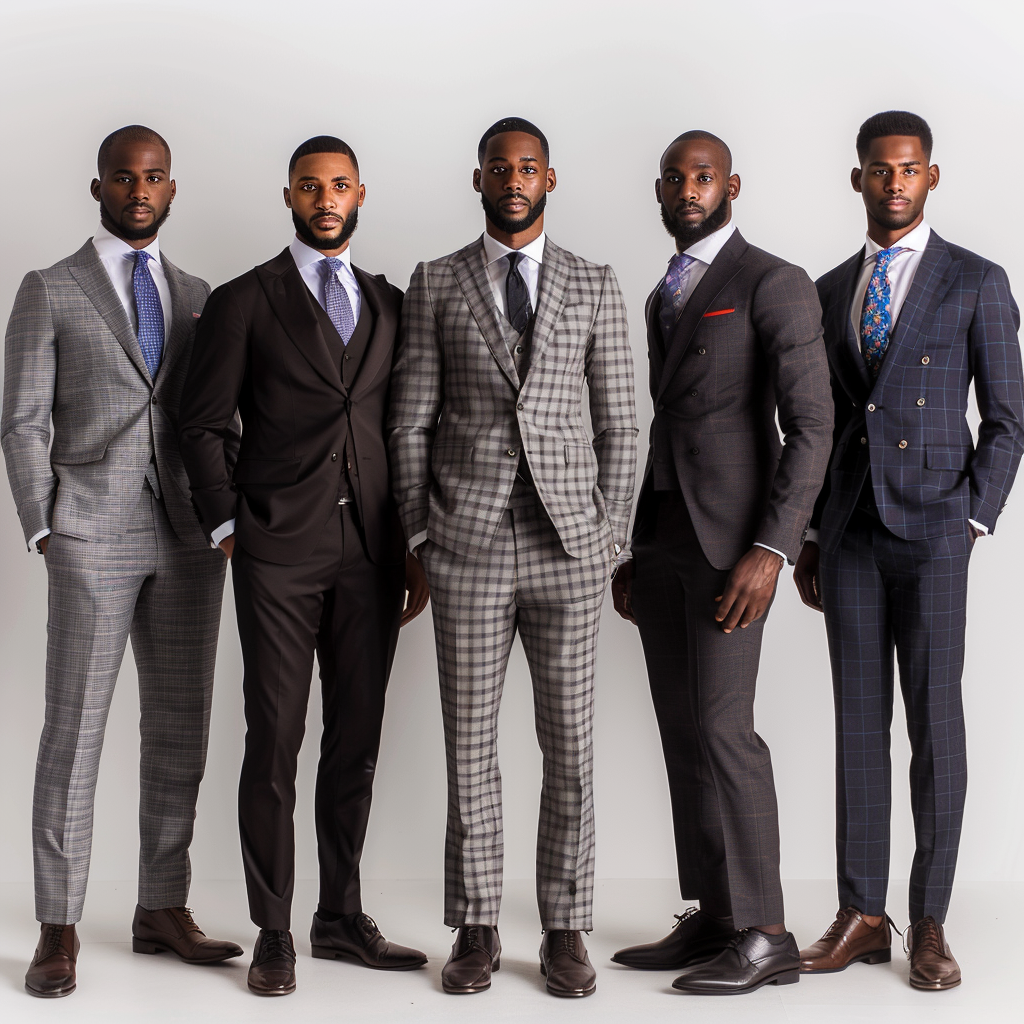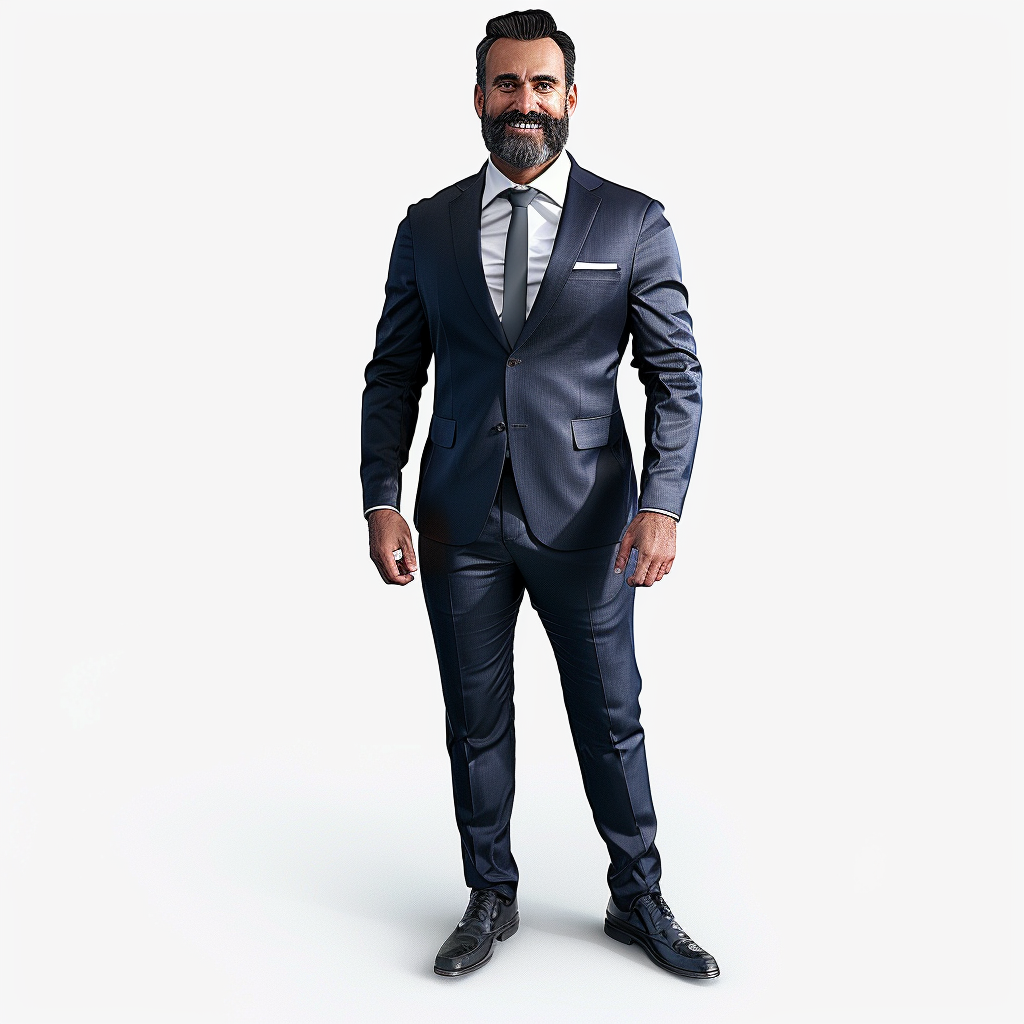When Michael Kors said, “A man in a well-tailored suit will always shine brighter than a guy in an off-the-rack suit,” he wasn't just talking about clothing. He was highlighting a universal truth of fashion and personal presentation. A suit is not just a garment; it's a statement, a piece of art that speaks volumes about the person wearing it. This is why understanding the nuances of how a suit should fit is more than just a matter of fashion—it's about crafting your personal brand and image. With xSuit's ultimate guide, we'll ensure that when you step out in a suit, you're not just wearing clothes; you're making a statement.
How Should a Suit Jacket Fit?
The perfect fit of a suit is akin to the harmony in a symphony. Every element needs to be in sync, providing comfort, style, and a silhouette that compliments your natural shape.
The jacket is often the first thing people notice, so its fit is paramount. Here are some details to ensure your suit jacket fits just right:
Shoulder Alignment
The shoulders are a critical focal point for the overall fit. The shoulder seams should end where your shoulders do without extending beyond or falling short. This alignment ensures the jacket maintains its structure and complements your body's lines. If the shoulders don't fit correctly, the whole suit looks off, no matter how well other parts may fit.
Jacket Closure
The way a jacket closes can make or break the look of a suit. It should close without any pulling or bunching of fabric, which can cause discomfort and a disheveled appearance. A properly fitted jacket will close comfortably, allowing you to move freely without distorting the suit's shape.
Sleeve Length
Sleeve length is more than just a detail; it signifies meticulous tailoring. The ideal sleeve length allows a bit of the shirt cuff to show, which is a stylistic choice and a nod to traditional suit etiquette. This detail adds a layer of sophistication to your overall look.
Jacket Length
The length of the jacket determines the balance of the outfit. It should be long enough to cover your seat but not so long that it looks like a coat. This balance is crucial for creating a proportionate silhouette that enhances your height and build.
Lapel
The lapel should sit smoothly against the chest, with no gaping or puckering. It's a central element that frames the face and tie, so its fit is key to the suit's overall aesthetic. The lapel width should be chosen based on your body type and the suit's style, ensuring it complements rather than overwhelms your frame.
Chest
The chest area should provide enough room to move comfortably without the fabric pulling. This fit ensures the jacket looks good whether you're standing, sitting, or moving. A well-fitted chest also helps the lapels lay flat, maintaining the suit's clean lines.
Back Vents
The choice between single and double vents affects mobility and style. Regardless of the style, vents should lie flat and only open when necessary, preserving the suit's shape and allowing ease of movement.

How Should Suit Pants Fit?
When it comes to pulling off a polished and professional look, the fit of your suit pants is just as crucial as your jacket. The right fit ensures comfort, enhances your overall silhouette, and complements the suit's top half seamlessly. Let's delve into the specifics of achieving that impeccable fit for your suit pants, ensuring they flatter your physique and elevate your style.
Waist
The waistband should sit comfortably without being too tight or too loose. It should accommodate natural movement and sitting without shifting or twisting, ensuring the pants look sharp and stay in place.
Rise
The rise affects how the pants sit on your body and can influence the overall proportion and comfort. Getting the rise right is key to ensuring the pants complement your body type and suit style.
Leg Length and Break
The leg length is vital for achieving the desired break—the point where the pants meet your shoes. There are several break options:
- Full Break: The most traditional style, where the pants crease significantly at the top of the shoes, suitable for more conservative or classic looks.
- Half Break: A moderate crease at the shoe, offering a balanced, versatile look that works well for most occasions.
- Quarter Break: A minimal crease for a more modern and streamlined appearance.
- No Break: The pants end right at the top of the shoes, with no crease, providing a clean and contemporary look.
Leg Width
The width should allow freedom of movement without excess fabric, creating a clean line from hip to hem. Whether you prefer a slim fit or a more traditional cut, the width should flatter your build and match the suit's style.
Tips for Getting the Perfect Fit with a Tailor
Not every suit is going to fit right off the rack. Working with a tailor can transform a good suit into a great one, ensuring every detail is customized to your body. Here are some essential tips to ensure you get the perfect fit when collaborating with a tailor:
Communicate Clearly
Your tailor is an expert, but they're not a mind reader. Be clear about your preferences, the look you're aiming for, and any specific requirements you have. Whether it's the break of the pants, the fit of the jacket, or the overall silhouette, your input is crucial.
Understand Alteration Limits
While tailors work wonders, not everything is alterable. Understanding the limitations of alterations helps set realistic expectations. For example, it's challenging to alter shoulder width significantly without reconstructing the jacket, so ensure the suit fits well in the shoulders from the start.
Be Open to Suggestions
Tailors have a wealth of experience and can offer valuable advice on what works best for your body type and style preferences. While your vision is important, be open to their suggestions to achieve the best possible fit.
Check the Fit Multiple Times
Fittings are an integral part of the tailoring process. Attend all scheduled fittings and be attentive to how the suit feels and looks. Move around, sit down, and adopt various postures to ensure the suit is comfortable and flattering from every angle.
Pay Attention to Detail
Small details can make a big difference in the overall appearance of your suit. Discuss button placement, lapel width, pocket style, and other details with your tailor to ensure every element meets your expectations.
Bring Your Accessories
If you have specific shoes, belts, or shirts you plan to wear with the suit, bring them to your fittings. This helps ensure the suit works well with your existing wardrobe and that the lengths and proportions are correct.
Performance Suits That Fit Out of The Box
While a tailor can add the finishing details to a suit, properly fitted pants and jackets shouldn't require extensive adjustments. With a variety of modern fits and styles, xSuits are designed to look and fit great from the get-go. If you need some assistance determining your suit size, check out our AI Fit Finder. By answering a few simple questions, you can find the perfectly fitted suit in less than a minute.


